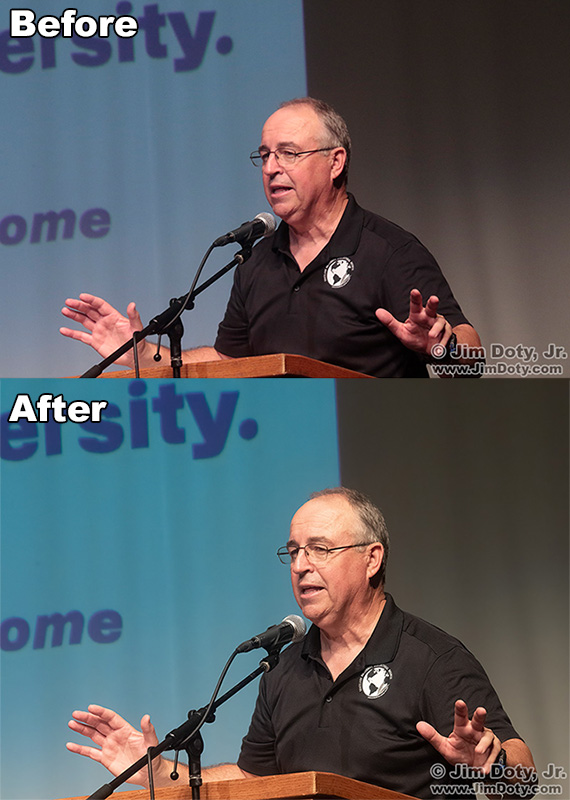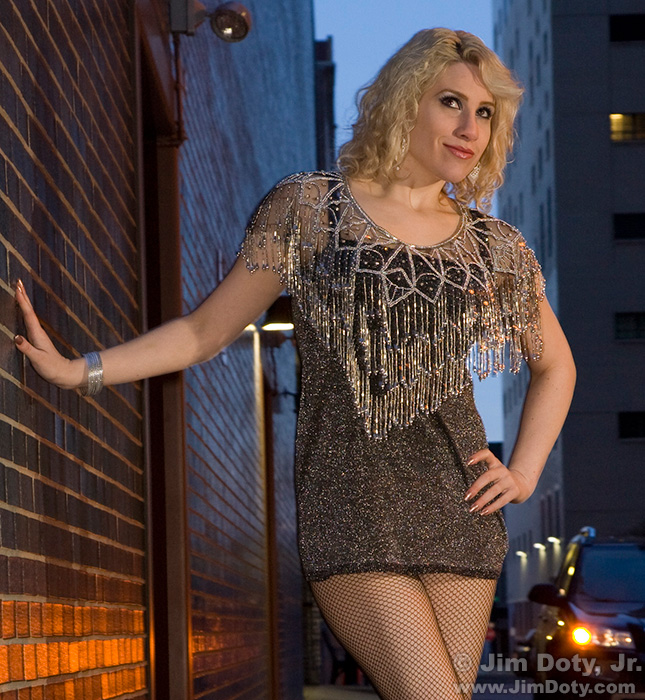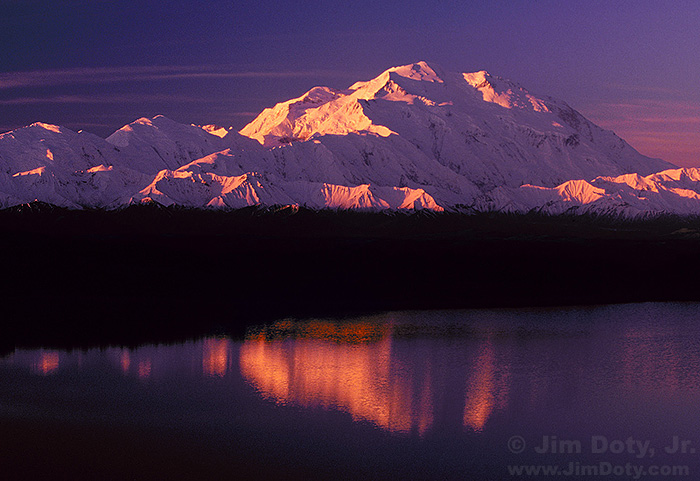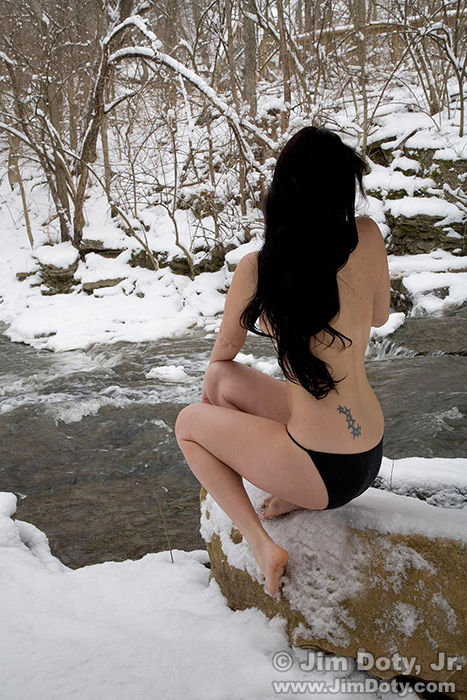For a project I am working on, I opened my “favorite photos” folder with Adobe Bridge to look for my favorite portraits created in Michigan. I did a search for “Michigan” + “portraits” and in less than a second Bridge showed me all of my favorite portraits taken in Michigan. This is a partial screen capture of some the results. (Bridge found a total of 154 favorite portraits taken in Michigan.) As I looked at the stars under the portraits of Anoush, it gave me an idea that became this article. My camera can rate photos with one to five stars. when I download the photos and open them in Bridge I see those star ratings. Sometimes that can be very important.
Category Archives: Using Equipment
How To Mix Flash and Ambient Light for a Christmas Portrait
On Christmas eve I found myself doing Christmas portraits for Kristina’s portfolio. She is a friend of mine who is a model and actress in L.A. I had to improvise a bit with the lighting and I needed to get the right mix of flash and ambient light for the look I wanted.
How to Photograph Christmas Lights with Your DSLR, Mirrorless Camera, or Smartphone
‘Tis the season and there are a lot of Christmas lights out there to photograph. It is fun and easy, and with a few tricks up your sleeve there are creative things you can do. Many of these techniques can be used on other lights throughout the year, so this is a good time to practice your skills for photographing lights.
Dance Recital: Create a Lot of Images and Choose the Very Best
As a photo editor said long ago, “Take lots of photos and send me the very best.”
The “Living Art Studios” dance recital was Saturday night. It is one of the biggest events of the year in our little town. Yesterday I sent a small selection of images from the recital to the local newspaper which is published weekly on Thursday. I usually send 6 to 10 images and they usually publish from 3 to 6 and on really slow news week they post even more. Today I am taking one last look at all the dance images for any additional favorites for this event. Here in this screen capture from Adobe Bridge are the first 20 shutter clicks (one RAW and one JPEG image for each click) with one of my cameras.
Review and Introduction: the Sky-Watcher Star Adventurer 2i

I purchased the Sky-Watcher Star Adventurer 2i so my camera and lenses can track the motion of the stars across the sky. I read several comparison articles before making my choice. I put it through its paces and decided to write a review with a basic introduction as to how to use it. Not only does it work, it works very well. This photo of the Andromeda Galaxy was taken on my first night out with clear skies.
Tutorial: Tweaking a Photo and Remembering the ACR Settings
In this tutorial I will show you how to change the color balance of a RAW or JPEG file, and how to remember those changes to make the same exact changes to other files shot in the same lighting conditions.
How to Photograph an Event and Choose Your “Selects”
In a prior article I shared 11 photos from a project for Graceland University. I was in the process of choosing selects. Years ago a photo editor said, “Take lots of photos and send me the very best.” Most editors don’t want to go through all of your images. It is the photographers job to go through the photos from an event and choose the best images for the editor. They are called “selects”. The editor goes through the selection and makes the final choices as to which image or images will be published.
Tutorial: How to Use the “Slow Shutter” iPhone app at Night
It started when a friend asked me how to use a long shutter speed on her iPhone. It was at night not long after the recent Northern Lights excitement all across the U.S. I told her to get the Slow Shutter app. This article is a brief tutorial to get you started using the app at night.
Maroon Lake and the Maroon Bells in the Moonlight
I had never been to Maroon Lake and the Maroon Bells, so I planned a trip. Ten years this evening, Bob (my brother-in-law and long time photo buddy) stood on the lake-shore. I saw them for the first time. I was entranced. I see why this is considered to be one of the two most popular and spectacular scenic locations in Colorado.
How to See and Photograph the Perseid Meteor Shower Tonight

Perseid Meteor photographed from Rose Hill Cemetery west of Lamoni, Iowa. 4:55 am CDT, August 13, 2018. Cropped from the original image.
Tonight, August 11-12, you can still see the Perseid Meteor Shower. But you can also look for the next few nights. This article will tell you what you need to know to see and photograph the most popular meteor shower of the year.
What You Can Learn from Photographers and their Gear at the Olympics
One year ago today I was watching the Olympics and taking pictures of the TV screen. I noticed how the photographers were equipped.
Photos: 4th of July Parade
Every year I photograph the annual 4th of July parade in Lamoni Iowa. In addition to the 14 “selects” I share below, I discuss the equipment I use, the number of photos, and at the end of this article I describe what I look for when I photograph a parade. “Selects” is a newspaper/magazine word for the best photos (the photos selected) out of all the photos created. An editor working on an event article might say to a photographer, “Send me a dozen of your selects”, so the photographer would send 12 images out of all the photos that were created at the event.
Metaphid Jumping Spider
When a rare photo opportunity comes your way, jump on it (pun intended). You have no idea if or when it will happen again.
How To See and Photograph the Blood Moon Eclipse, March 13-14, 2025
Don’t miss it. This total eclipse happens this Thursday-Friday, May 13-14 (depending on your time zone). This article will show you how to photograph it. To see it, just grab a lawn chair, a warm blanket, a cup of hot chocolate, and go outside and enjoy the show. A pair of binoculars adds to the show. Continue reading
The Best Colors Come From the Best Exposures
This has to be one of the best kept photographic secrets: The more accurate your exposures are, the better your colors will be. Why? If your exposures are off, the colors in your photograph will shift in different directions. You can correct the exposure in post processing, but you can’t correct the color shifts. Since the colors shift in different directions, if you try to correct one color (as you will see below), the other colors will get even worse.
Rachel in Rembrandt Lighting
This is Rembrandt lighting. The best clue is the triangle shaped light on her right cheek.
RGB vs Luminance Histograms – How To Use Them
If your camera offers both RGB and luminance histograms, choose RGB. An RGB histogram is one of your most valuable exposure tools. A luminance histogram can lead to bad exposures and poor colors.
How to Use Your Camera’s Exposure Compensation Scale
The exposure compensation scale on your camera is one of the keys to mastering exposures, getting better images, and ending up with professional quality colors. This means taking your camera off of full auto mode and taking control of your own exposures.
How to Photograph a Musician in the Cold and Snow

It was my happy privilege to do winter portraits of Beth Presler who is a superb violinist. This article has suggestions for photographing any musician on a cold, snowy winter day.
Winter Photography Safety Essentials

Some of the winter travel items I carry in the trunk of my car. This is the “kitchen” and “furnace”.
I grew up in Colorado where strange weather can strand you in any month of the year. Even though it is rare, I’ve seen blizzards in the Colorado high country in July. So I learned to carry some safety essentials when doing winter photography in remote locations. You never know when you might be stranded for several hours, a whole day, or longer, until the blizzard abates and someone can come find you. This is what I carry in my car when I hit the road in the winter and pretty much any time I am going to be in the High Rockies. I include a few winter travel tips, too.
How to Protect Your Camera Gear in the Cold and Snow
Cold and snow can cause a lot of damage to your camera gear. Something as simple as shooting outside and taking your camera inside your house or car can cause hidden damage that won’t show up until days or weeks later. The simple steps in this article could save you hundreds of dollars in repair bills.
How To Work With A Model (or Anybody Else) When The Windchill is 4°
You would think a windchill of 4° Fahrenheit (-16°C) would be too cold for a photo shoot, but not with some models. Selina and I booked this January shoot weeks in advance so we knew it would be cold, but we had no idea how cold until the day arrived. Despite the frigid temperatures, Selina did no want to reschedule for later. When we created the image above the windchill was 4°. By the end of the shoot the windchill was 3°. Incidentally, this image made it into my photography book (page 217). Here’s the story behind this image and how to work with a model (or anybody else) when it is so cold.
The Sunny f16 Rule Isn’t Reliable in Winter
The Sunny f16 rule is really useful on bright sunny days in the spring, summer, and fall, but you can’t rely on it for accurate exposures on bright, snowy winter days. It will often lead you astray and you will have seriously blown out highlights. There are much more accurate ways to meter in the winter.
Testing Your Camera’s Snow Exposure Latitude
The “snow exposure latitude” for every camera is different. You won’t find it in your camera’s manual but it is easy to determine with a do-it-yourself test. Why does it matter? If you don’t know the snow exposure latitude for your camera and how to apply it to your images, the color and quality of your winter photos will suffer.
How to Photograph a Nude Model in the Cold and Snow
It is difficult enough to create a beautiful nude image under normal circumstances, much less in the cold and snow. You need to bring some significant skills and experience to the task. So does your model.
Metering Nighttime Winter Scenes

Twilight, Rocky Mountain National Park. Sirius, Canis Major, Orion, Taurus, the Hyades star cluster, and the Pleiades star cluster are all visible in the fading light. Click for a larger version.
You can photograph the night sky year around, but winter brings an added bonus: SNOW! When you don’t have the benefit of moonlight, most of the year land forms a dark to black silhouetted skyline against the night sky. In winter you have the possibility of including the highly reflective snow. You can see both in this photo. Any place not covered with snow is very dark to black. Having reflective snow is why winter is the favorite time of year for a lot of photographers to go out and photograph the night sky.
Metering Evening Winter Scenes
Just like metering daytime winter scenes, the key to metering evening winter scenes is knowing what to meter and deciding how much exposure compensation to use.
Metering Wildlife in the Snow, Part Two
Most wildlife are medium to dark in tone, making them a challenge to meter properly in the bright, white tones of winter. If you trust one of your camera’s automatic exposure modes, the odds are good you won’t get the best exposure. If you switch over to manual exposure and make the right decisions, you can get great exposures and better quality photos (more about that later).
Metering Wildlife in the Snow, Part One
Metering dark toned wildlife in the snow is a major exposure challenge. It is usually best to avoid large “burned out” areas (washed out, featureless white) in a nature or landscape photograph, but with properly exposed snow, the wildlife can be so dark as to lose all texture. On other hand, metering for the wildlife can burn out the snow. So what do you do? And what about the complications of metering white animals?
Metering People in the Snow
The white snow in a winter scene can and often does fool a camera meter into underexposing a portrait, so here are the steps to take to get the right exposure. I throw in a few portrait suggestions too.

























